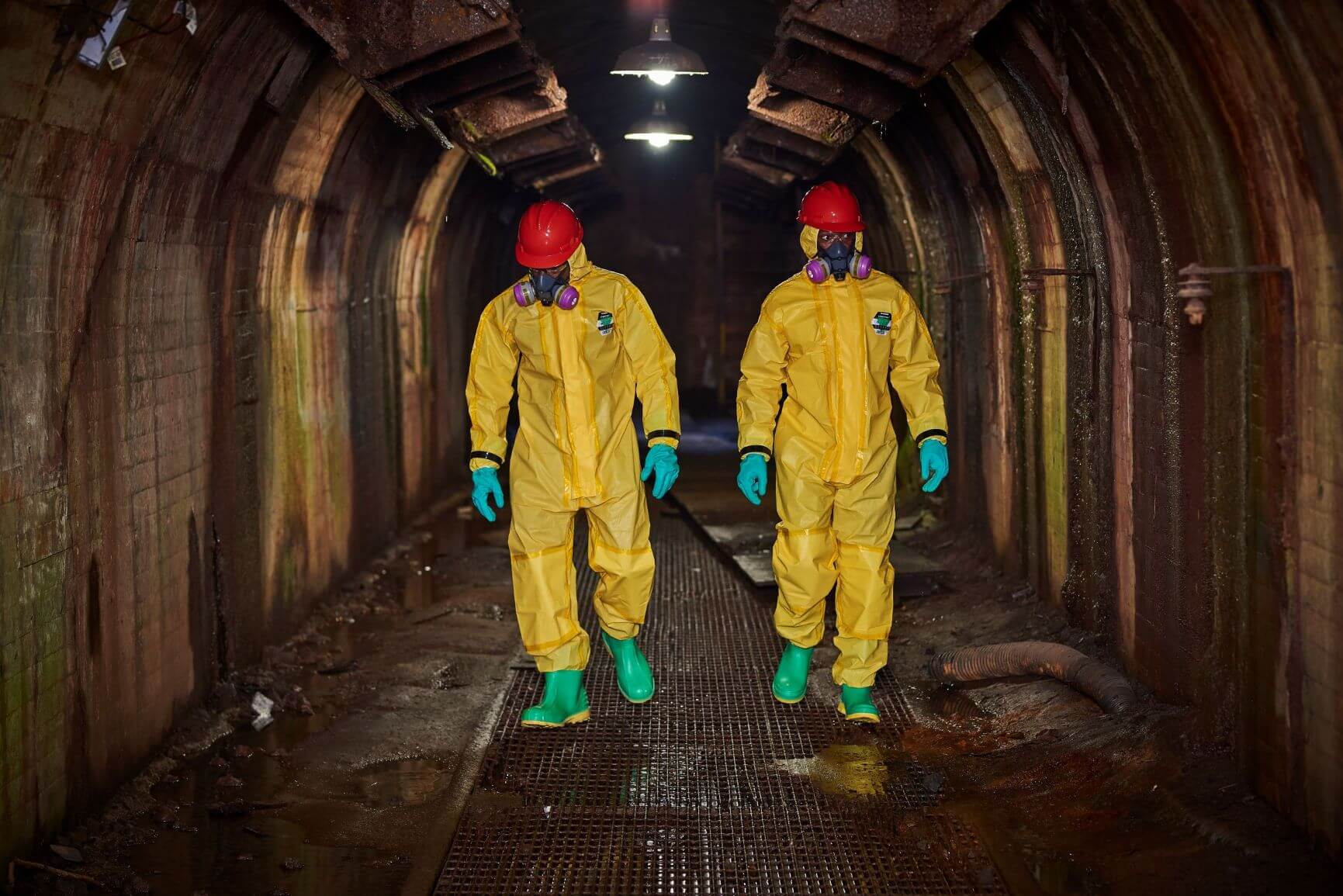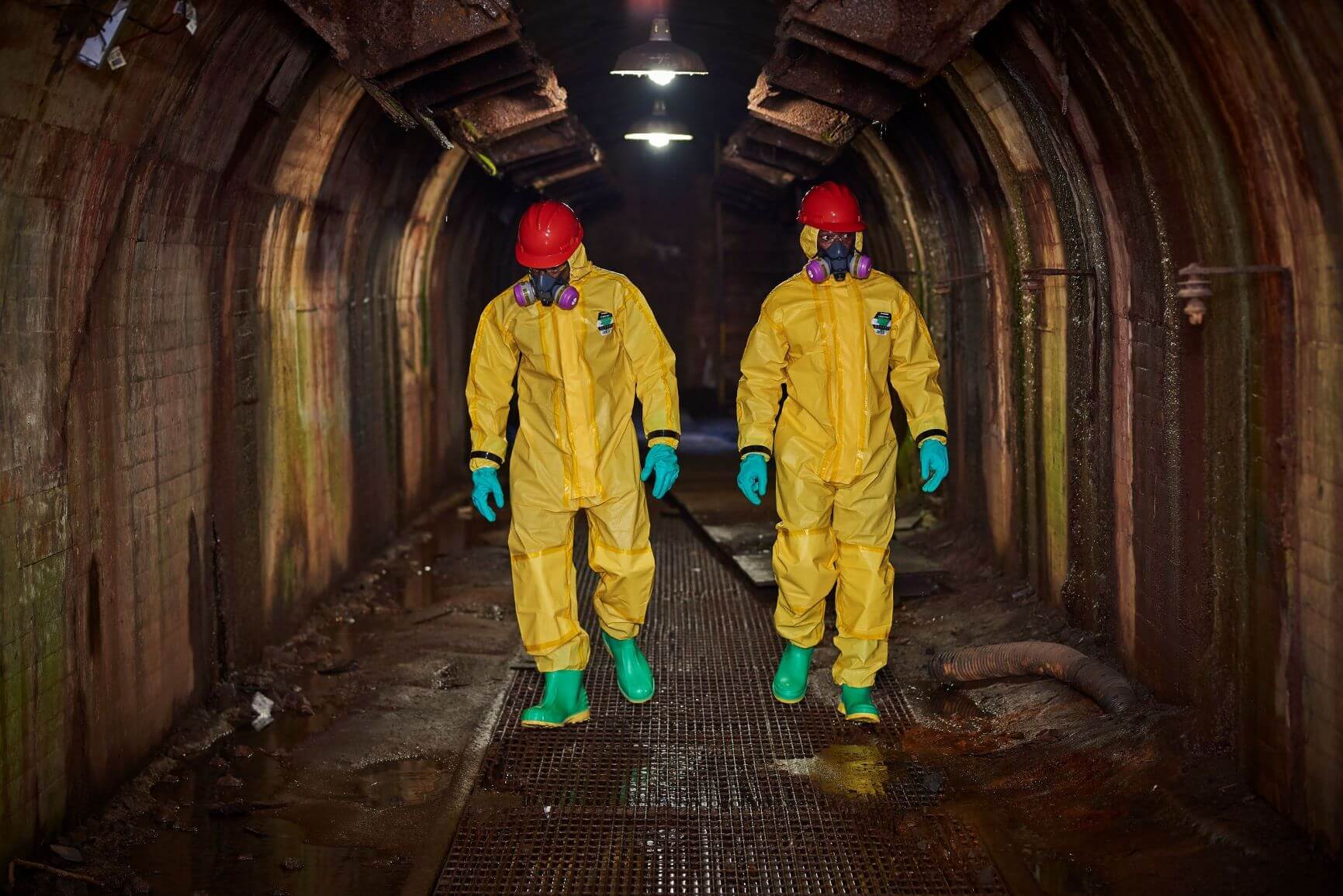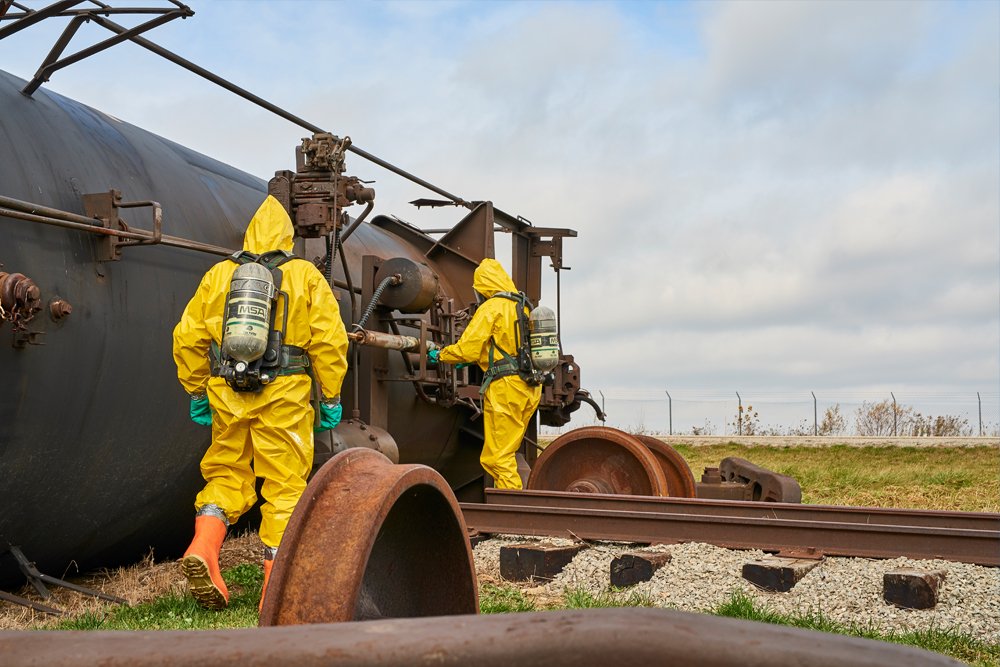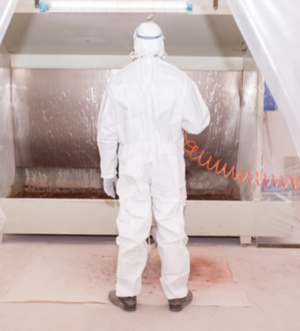In a high-risk situation, such as a disease outbreak or chemical or radiation leak, workers wearing safety clothing are exposed to dangerous agents, chemicals and hazards.
This is where robust donning and doffing procedures are essential; if not lifesaving. A single error in the donning and doffing process could result in cross-contamination or exposure to harmful chemicals.
But how can safety managers ensure that their donning and doffing procedures are up to scratch?
In this blog, we will outline some best practice tips for effective chemical suit donning and doffing, as well as several things organizations can do to improve their processes.
1. Identifying the long-term effects of chemicals that have no immediate effect
As some chemicals have no immediate visible effects, minor contamination during the donning and/or doffing of PPE might go unnoticed – however, over an extended period of time, routine exposure to these chemicals could have health consequences in the longer term.
On that basis, it’s vital that organizations understand the long-term health effects of working with chemicals as it will allow them to highlight the risks to operators on the ground and encourage them to follow proper donning and doffing procedures.
In addition, identifying the hazards associated with such chemicals or other agents will allow organizations to acquire more applicable PPE that meets the operational requirements of employees.
2. Address donning and doffing ‘blind spots’ that are often missed
Having a comprehensive donning and doffing process will ensure that nothing is missed and that operators are adequately protected. Proper procedure is vital but can sometimes be overlooked as operators exit the operational environment.
To avoid this, a general rule of thumb is for operators to have a partner who assists them with the donning and doffing process. Putting on and securing certain pieces of protective clothing – such as a helmet, for example – might seem simple, but is in fact difficult as operators cannot see behind them to check if it’s secured correctly and there are no gaps.
It’s easy to make mistakes and the probability of error is high. Incorrectly sealing the front of the suit or gloves, for example, could allow chemicals or other hazardous agents to seep into them. A partner, however, can conduct key parts of the procedure – such as zipping up the suit or applying adhesive tape around gloves for additional sealing – and carry out a final check for tears or damage.
In some environments, trained observers use a checklist to review the correct sequence of events and read aloud the procedure for putting on PPE. This helps to make sure that PPE is donned in the right order respective of the environment.
On the other hand, when doffing PPE, having a partner will help to mitigate the possibility of cross-contamination. The partner can help to remove the operator’s PPE in line with guidelines (each piece of PPE may have separate instructions) and minimize contamination by using their own PPE to remove their partner’s.
To encourage employees to follow proper procedure – and reinforce the importance of doing so – organizations should outline the health risks of failing to don and doff PPE correctly and the hazards should be clearly printed throughout donning and doffing areas of the operation.
3. Establish best practice donning and doffing procedures
In addition to addressing the blind spots, setting up a partner system and placing risk warnings in donning and doffing areas, organizations need to document a formal donning and doffing procedure, along with regular training and reviews.
A formal document outlining the donning and doffing procedure is particularly useful for new employees (if they have any issues with regards to wearing PPE correctly, senior members of staff can direct them to the document and help them through the process) and helps to remind everyone else of what the process actually is.
Also, training sessions – either conducted by the PPE supplier and/or the organization itself – will help employees to remember the steps they need to flow and emphasize the importance of doing so.
Finally, regular review of donning and doffing procedures is not only an opportunity for organizations to identify areas for improvement, but also to ask employees what they think of current processes and if they feel adequately protected – employees can also raise concerns themselves. When it comes to donning and doffing, the foremost concern is employee protection – and who better to ask for advice and suggestions than those wearing the PPE and operating in hazardous chemical/biological environments?
Top tips for a donning and doffing buddy system
As well as the points outlined above, here are five more things organizations can do to further improve their donning and doffing:
- Thoroughly review user instructions to identify what operators should and shouldn’t do when it comes to donning and doffing PPE.
- Remove shoes and sit down during donning of coveralls when pushing feet into legs of a garment to prevent unnecessary stress on leg seams.
- Ensure the partner assisting with doffing is suitably protected.
- Use a clear method of removal to minimize the risk of cross contamination – such as “peeling” a garment from the top whilst turning it inside out so contamination remains on the inside of the bundle.
- Use a suitable bag to store used PPE in so that it can be disposed of properly as per regulations
Donning and doffing can be a complex process and after stressful periods in contaminated areas, operators might forget to follow the agreed procedures. However, with proper training, documentation, policies and review periods, safety managers can develop more effective (and robust) donning and doffing practices and ensure that operators are completely protected.




